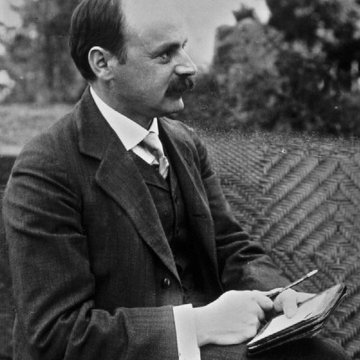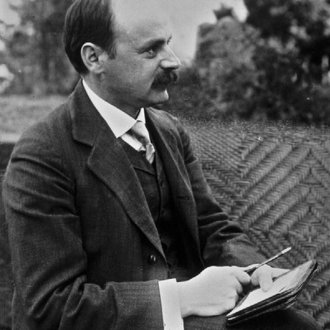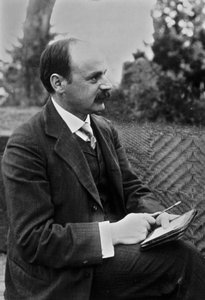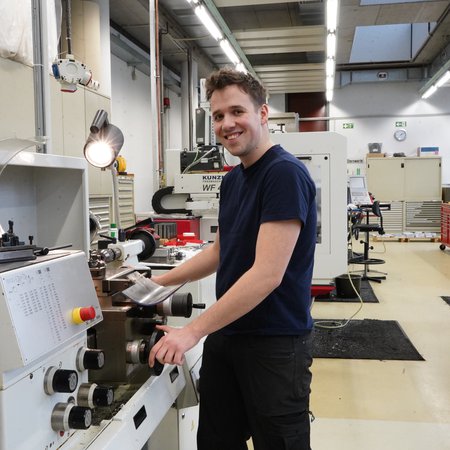The centenary of astrophysicist Karl Schwarzschild's death
May 11th 1916 marks the death of Karl Schwarzschild, one of the most versatile astrophysicists and scientists of his time. He was only 42 years of age and at the height of his achievements when he died. Schwarzschild's work encompassed a wide range of scientific topics: he not only studied observational astronomy, but also furthered the development of astronomical instrumentation, and he was the first to give an exact solution to Einstein's field equations, which is now known as the “Schwarzschild solution”. Karl Schwarzschild saw the benefits of combining the scientific capabilities of chemistry and physics with astronomy and, with a large personal commitment, strongly promoted the emerging field of astrophysics.
Karl Schwarzschild was born in Frankfurt am Main, Germany, on October the 9th 1873. He started his career at the young age of 16, when he published papers on the determination of orbits of celestial bodies in Astronomical Notes. He studied in Strasbourg and obtained his doctoral degree in Munich in 1896. From 1897 he worked as an assistant at the Kuffner Observatory in Vienna and from 1901 to 1909, was a professor and director of the observatory in Göttingen. In 1908 Karl Schwarzschild was already recognized as one of the most accomplished astrophysicists of his time, and accepted the position as director of the Astrophysical Observatory Potsdam (AOP). AOP was founded in 1874 and was the first institute to have the word “astrophysics” in its name. Despite only spending eight years at AOP, Schwarzschild carried out fundamental work in astrophysics and advanced the general theory of relativity.
To this day, most books about him focus on the Schwarzschild solution to Einstein's field equations, but Schwarzschild's scientific interests were much broader. He worked intensely on celestial mechanics, stellar photometry, field theory, quantum mechanics and astronomical instrumentation. He also studied spectroscopy, stellar structure and stellar dynamics. Special appreciation should be paid to his theory of optical systems, which is still used when building large telescopes today.
Since 2011, in honour of Karl Schwarzschild, former director of the AOP, the Leibniz Institute of Astrophysics Potsdam (AIP) has been awarding young and promising natural scientists with the Karl Schwarzschild Fellowship.
May 11th 1916 marks the death of Karl Schwarzschild, one of the most versatile astrophysicists and scientists of his time. He was only 42 years of age and at the height of his achievements when he died. Schwarzschild's work encompassed a wide range of scientific topics: he not only studied observational astronomy, but also furthered the development of astronomical instrumentation, and he was the first to give an exact solution to Einstein's field equations, which is now known as the “Schwarzschild solution”. Karl Schwarzschild saw the benefits of combining the scientific capabilities of chemistry and physics with astronomy and, with a large personal commitment, strongly promoted the emerging field of astrophysics.
Karl Schwarzschild was born in Frankfurt am Main, Germany, on October the 9th 1873. He started his career at the young age of 16, when he published papers on the determination of orbits of celestial bodies in Astronomical Notes. He studied in Strasbourg and obtained his doctoral degree in Munich in 1896. From 1897 he worked as an assistant at the Kuffner Observatory in Vienna and from 1901 to 1909, was a professor and director of the observatory in Göttingen. In 1908 Karl Schwarzschild was already recognized as one of the most accomplished astrophysicists of his time, and accepted the position as director of the Astrophysical Observatory Potsdam (AOP). AOP was founded in 1874 and was the first institute to have the word “astrophysics” in its name. Despite only spending eight years at AOP, Schwarzschild carried out fundamental work in astrophysics and advanced the general theory of relativity.
To this day, most books about him focus on the Schwarzschild solution to Einstein's field equations, but Schwarzschild's scientific interests were much broader. He worked intensely on celestial mechanics, stellar photometry, field theory, quantum mechanics and astronomical instrumentation. He also studied spectroscopy, stellar structure and stellar dynamics. Special appreciation should be paid to his theory of optical systems, which is still used when building large telescopes today.
Since 2011, in honour of Karl Schwarzschild, former director of the AOP, the Leibniz Institute of Astrophysics Potsdam (AIP) has been awarding young and promising natural scientists with the Karl Schwarzschild Fellowship.
Images
Karl Schwarzschild.





